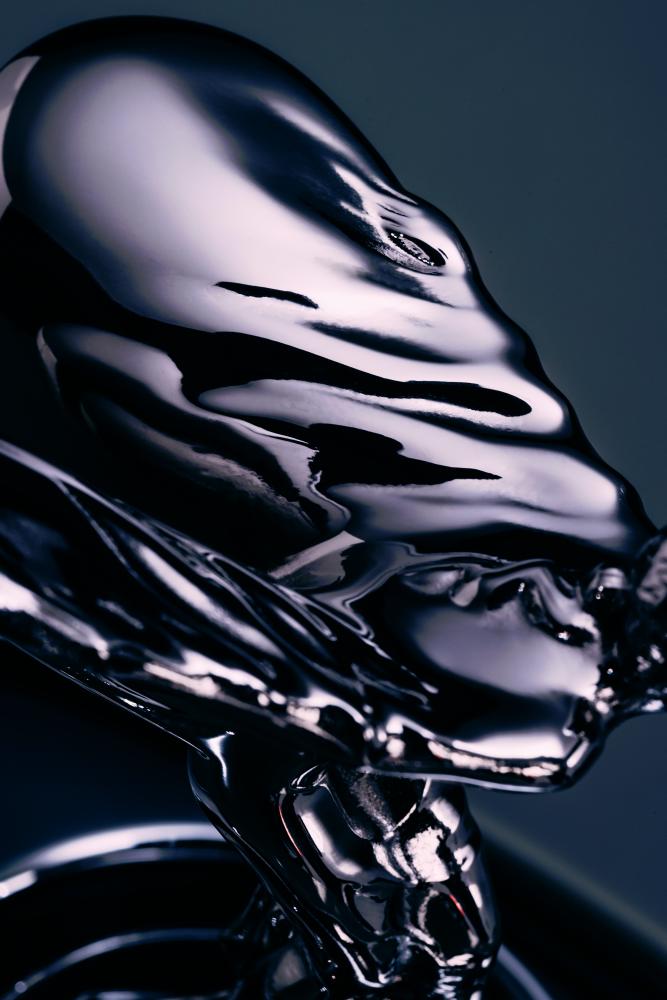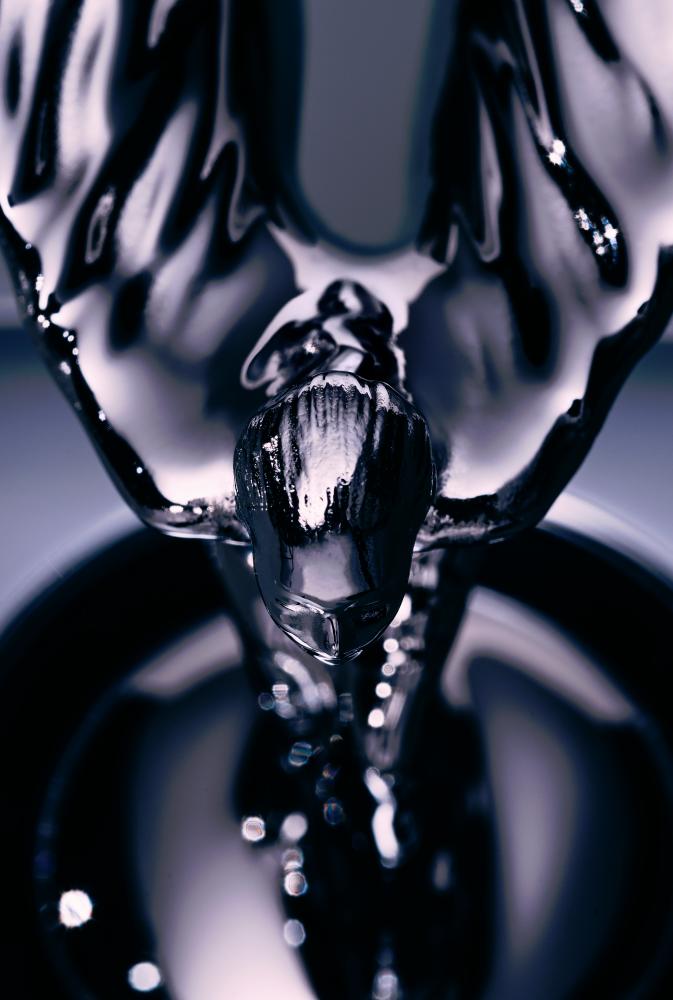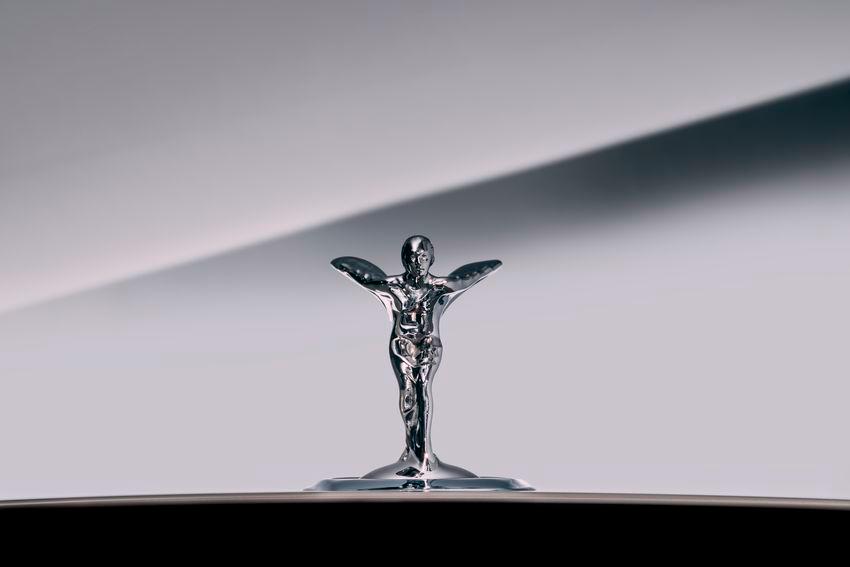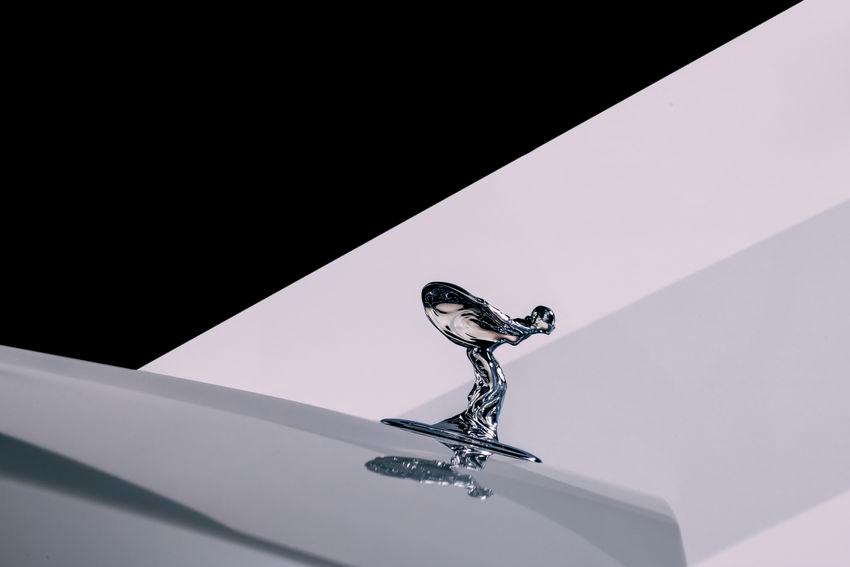THE Spirit of Ecstasy has been a defining feature of the Rolls-Royce brand since 1911. But just as the marque and its cars have constantly evolved and changed with the times, so she herself has undergone her own periodic transformations.
In her original 1911 form, she was a statuesque 6 7/8 inches (close to 18cm) on her bare feet; by the 1960s, she had passed through eight iterations and stood a more petite 4 5/16 inches tall (about 11cm). The distance from her nose to the tip of her outstretched robes had also shrunk proportionally, from five inches (12.7cm) to three (7.6cm). There have also been subtle variations in her base shape, stance and precise inclination of her “wings” over the decades.
More radically, clients buying models from 1934 until 1959 had the option of a kneeling figure, which some considered better suited to the coachwork designs of the period.
In the 1970s, some countries tried to ban the mascot on safety grounds. In Switzerland, for example, clients weren’t allowed to display her at all, and on receiving their cars found her languishing in the glove compartment. Rolls-Royce’s typically elegant and ingenious solution was to mount the mascot on a spring-loaded base, allowing her to sink into the radiator out of harm’s way at the merest touch. This retraction mechanism has evolved into a smooth, graceful movement known as “the rise” and is a standard feature on every Rolls-Royce cars hand-built at Goodwood, England.

Remade for the modern era
One of the many remarkable aspects of the Spirit of Ecstasy’s story is that from 1911, every figurine was personally cast, inscribed and hand-finished by Charles Sykes (1875-1950), an illustrator and sculptor who also designed advertisements and magazine covers. His daughter, Josephine, took over in 1928 and continued until manufacture was interrupted by World War 2 in 1939. Each Spirit of Ecstasy from this period is therefore minutely different from every other.
Today, they are made by specialists in Southampton, England, using a wax casting process combining methods and materials dating back over 5,000 years with 21st century technology.
Each figurine is based on a three-dimensional computer-generated image, digitally mapped from the original Spirit of Ecstasy. Using this image, skilled craftspeople created a solid cast tool, made by hand using cutters measuring just 0.2mm in size to ensure even the finest details were precisely replicated. From this cast tool, they produced a highly accurate wax model of the figurine, which was then coated in ceramic. After this coating had dried, the wax was melted away, leaving a perfect mould from which the new cast would be taken.
Each figurine is made by filling the mould with molten stainless steel, at a temperature of 1,600 degrees Celcius. Once the steel has cooled, the mould is opened to reveal the Spirit of Ecstasy in all her glory. The final transformation takes place in the finishing department, using a process called peening. The casting is blasted by millions of stainless-steel balls, just 17 thousandths of an inch (0.04mm) in diameter, which help to polish the surface without being abrasive. After machining, a final mirror polish and stringent quality assurance checks, the completed figurine takes her rightful place above the iconic Rolls-Royce grille.

In 2020, Rolls-Royce unveiled The Spirit of Ecstasy Expression. For this wholly-new visual treatment, designers redrew her in a simplified, modern form to be used as a graphic symbol as part of the marque’s updated corporate identity. The computer-generated, online-friendly illustration translates the figurine’s curves into a ribbon of parallel lines that undulates and changes according to its setting. It is designed to evoke movement; a silky, fluid form that appears to drape and flow over physical and digital surfaces.
On Feb 7, Rolls-Royce announced that the Spirit of Ecstasy would take a new form for her adornment on Spectre, the marque’s first electric car. She is more streamlined and graceful than ever before – the perfect emblem for the most aerodynamic Rolls-Royce ever created and for gracing the prow of the company’s bold electric future.
The earliest Spectre prototypes have a drag coefficient (cd) of just 0.26, making it the most aerodynamic Rolls-Royce ever created. The figure is expected to improve during the product’s exhaustive testing protocols undertaken in 2022.










